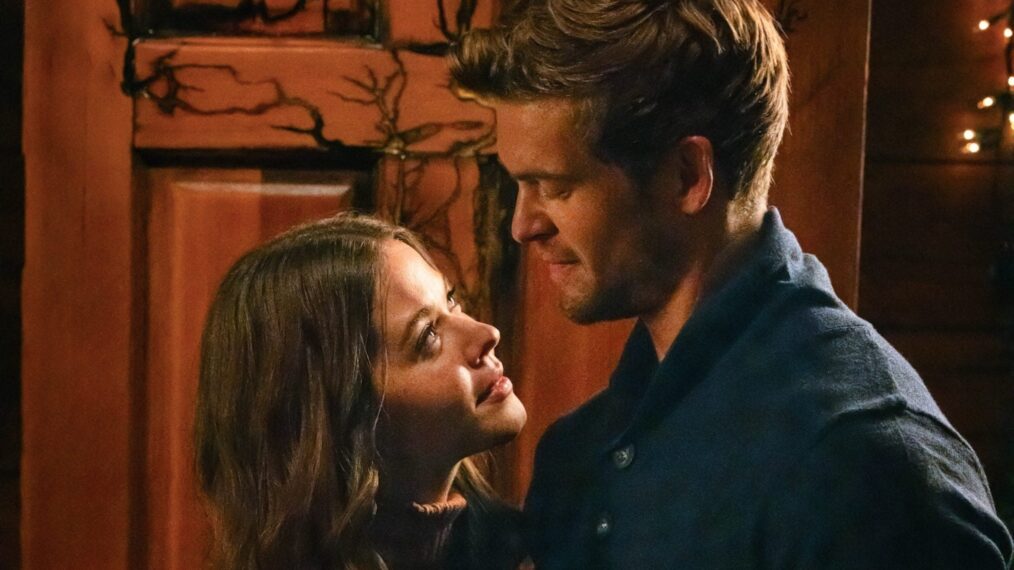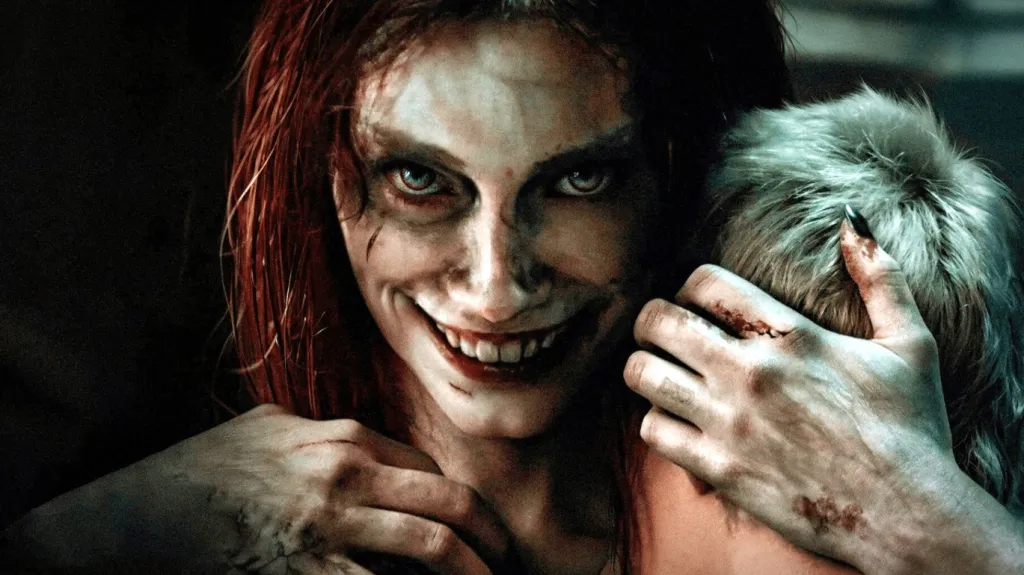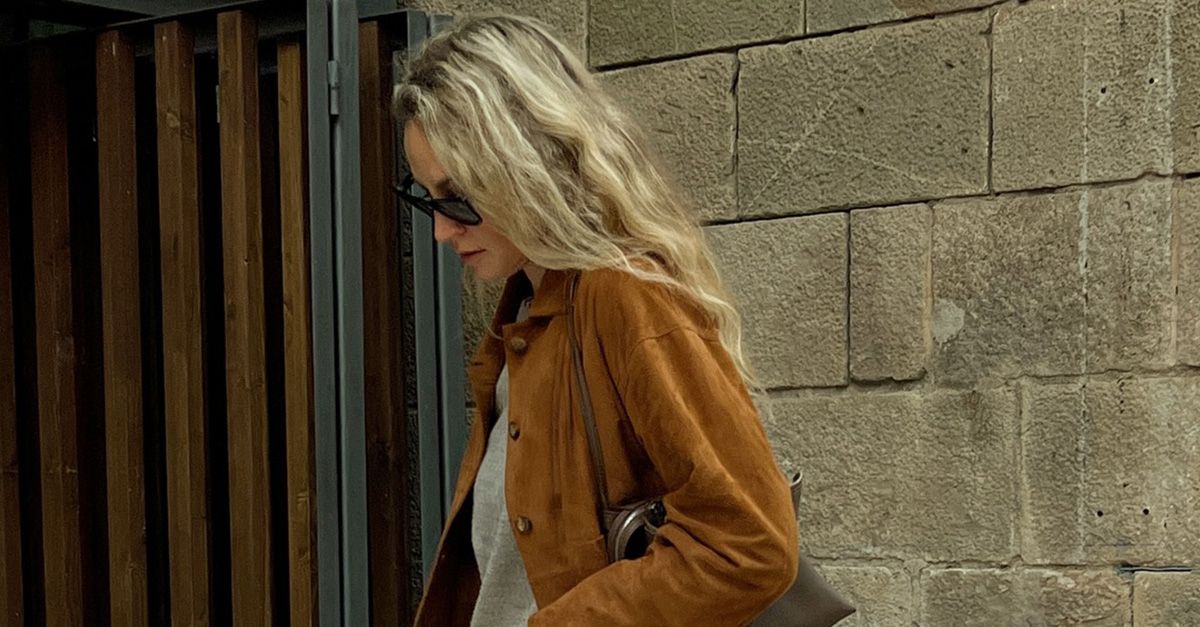2023 was a banner year for horror films from across the globe, which deserve just as much praise and attention as any domestic genre triumph.
In a year that’s had its share of ups and downs at the box office, horror continues to be a top performer and one of the most consistent sources of entertainment. Superhero fatigue continues to set in and the ballooning budgets of major studio blockbusters have started to seem more like a curse than a kindness. The film industry adapts accordingly and figures out what audiences want.
However, horror movies have never been more popular and 2023 has been a goldmine of blood, guts, and gore. This year alone has featured grandiose franchise sequels like Scream VI, Evil Dead Rise, Insidious: The Red Door, and Saw X. Even Hercule Poirot has gotten into the horror game with A Haunting in Venice. Additionally, weird and wild local horror releases like Skinamarink, Thanksgiving, Five Nights at Freddy’s, and The Pope’s Exorcist prove that there’s plenty of life left in the genre.
It’s easy for horror fans to get lost in the endless stream of mainstream tentpole movies, but some of the year’s strongest and scariest films are releases from outside North America. There’s such a rich tapestry of horror out there that showcases international voices that might otherwise slip through the cracks. Audiences owe it to themselves to check out these 2023 horror films from across the globe, many of which trump this year’s American slate.
The Forbidden Play
Directed by Hideo Nakata; Japan
Hideo Nakata will forever have a place in the horror genre due to his groundbreaking work with Ringu, which has arguably become the biggest j-horror film of all-time. Nakata has had other genre hits, like Dark Water, but whatever he turns out usually brings something interesting to the table with at least a few solid scares. Nakata’s The Forbidden Play sees the director turn to many familiar tricks and while it may lack the same impact as Ringu, there’s a lot to like here and it wouldn’t be surprising if this 2023 film spawned several sequels. The Forbidden Play is a haunting tale of grief and revenge that bears more in common with The Grudge movies than The Ring, with some Exorcist and Talk to Me thrown in for good measure.
A car accident claims the life of Miyuki, a wife and mother whose fractured family is left to sort through the sadness. Miyuki’s son, Haruto, bears his dead mother’s severed finger and performs a playful ritual that he hopes will regrow his mother and bring his family back together. Haruto’s emotional words work, but Miyuki returns as a vengeful wraith who’s determined to torture Hiroko Kurasawa, a video director with past ties to her husband. Nakata fills The Forbidden Play with ghoulish figures that linger out of focus in the background and find the perfect moment to attack. The Forbidden Play conjures genuine scares, but there’s also a tongue-in-cheek self-awareness to the horror movie that reflects Nakata’s decades of work in the genre. The Forbidden Play should delight most j-horror fans and the film makes excellent use of Kanna Hashimoto’s huge, expressive eyes, which become the film’s greatest special effect.
Sister Death
Directed by Paco Plaza; Spain
Paco Plaza’s Sister Death is a prequel to Verónica, a seance-centric Ouija board film that quietly caused a stir on Netflix. Sister Death is a gratifying expansion of its titular character’s story that’s set more than 40 years before Verónica’s events. However, the gothic horror movie firmly stands on its own and delivers a different brand of scares. Sister Death explores novice Sister Narcisa’s entry into a school for girls that has a sordid past as a convent. Narcisa’s budding supernatural abilities begin to eat away at the empathetic woman who gradually unravels the school’s disturbing past. This trajectory is hardly original as far as religious horror movies are concerned, but Sister Death excels with its moody atmosphere and patience. Sister Death, more often than not, feels like a silent horror movie and its confidence in character development and world-building is its secret weapon.
Sister Death presents familiar ideas, but in fresh ways. It avoids gratuitous jump scares, yet there are still some brutal murders that will leave the audience disturbed. It’s not hard to imagine Plaza taking a page out of his own book and turning this story into more of a sprawling horror universe, like he did with the [REC] franchise. The Nun II made waves at the box office this year, but Sister Death is easily 2023’s strongest faith-based nun horror movie.
Property
Directed by Daniel Bandeira; Brazil
Property is Brazilian filmmaker Daniel Bandeira’s feature film debut that hits extra hard due to its too-real commentary on financial and social inequality. There have been many films during the past few years that put the “one percent” in their crosshairs. Property cooks with the same ingredients, but brings them to a boil with its claustrophobic reverse home invasion execution. There’s a remarkably simple concept in play in Property, but Bandeira never overextends the film’s reach or makes its prolonged assault feel repetitive or formulaic.
A wealthy couple, who have just sold their fancy country house and its corresponding land, return to tie up loose ends. The property’s migrant workers learn that they’re about to be without jobs and lodging, which pushes them to desperate places as they hope to peacefully reason with the owners. Unsurprisingly, these discussions fall apart and Property morphs into one woman’s fight for survival as she’s locked in her armored car with little recourse. Property doesn’t cheat its way out of this premise and it’s easily the best trapped-in-a-car horror movie this side of Cujo, albeit with a more socially-minded and modern message.
Late Night With The Devil
Directed by Cameron Cairnes & Colin Cairnes; Australia & United Arab Emirates
Late Night with the Devil is a cinematic magic trick that’s written, directed, and edited by siblings, Cameron and Colin Cairnes. The film operates as a period piece found-footage film that’s like the lovechild of Documentary Now! and The Exorcist. Late Night with the Devil establishes that the movie is a lost master tape of the fictitious late-night talk show, “Night Owls with Jack Delroy,” during its 1977 Halloween broadcast. Delroy interviews a parapsychologist and the young survivor of a massacre at a Satanic church, which turns into the perfect cocktail for the macabre.
Late Night with the Devil expertly plays with tension as the audience anxiously waits for the other shoe to drop, but what transpires greatly surpasses expectations. The movie’s gonzo final act is worth the price of admission, but the movie’s intricate set design and painstaking details when it comes to recreating the lo-fi feel of ’70s television is incredible. David Dastmalchian absolutely kills it as the conflicted, terrified talk show host, Jack Delroy, and this is hopefully just the start of leading roles in horror films for Dastmalchian.
Venus
Directed by Jaume Balagueró; Spain
2023 has been a great year for Spanish horror and two of the year’s best movies come from the creators of [REC]. Jaume Balagueró’s Venus functions as a fascinating companion piece to Plaza’s Sister Death that’s loud and vicious in contrast to Sister Death’s quiet introspection. Loosely inspired by H.P. Lovecraft’s “The Dreams in the Witch House,” Venus follows an on-the-run go-go dancer who seeks refuge in an apartment complex alongside her estranged sister and her young niece. Venus introduces a team of wicked mobsters as its primary antagonists, but the movie eventually turns into something considerably more sinister.
Venus is full of strong performances (particularly by its lead, Ester Expósito) and excellent, unexpected gore and effects work. There’s also a major turn that takes place half-way through the movie that elevates Venus to something greater. Venus is the type of intense horror movie that works best the less that’s known about it. It comfortably holds its own with Evil Dead Rise when it comes to grueling fights against evil that are contained to an apartment complex.
Godzilla Minus One
Directed by Takashi Yamazaki; Japan
The kaiju genre is in the middle of a renaissance right now and Godzilla fans are eating well between Legendary Pictures’ growing Monsterverse and Japan’s mammoth success, Godzilla Minus One. Godzilla Minus One is the 37th film in the franchise and yet it’s without a doubt the scariest Godzilla that’s been committed to film and a worthy successor to Hideaki Anno’s Shin Godzilla. Godzilla Minus One doesn’t attempt to reinvent the wheel, but its respect for the kaiju genre, remarkable visual effects, and baked-in social commentary culminate into something truly special. Godzilla Minus One accomplishes more with a budget of less than $15 million than mainstream blockbusters do with 25 times that amount.
There’s a true sense of terror and despondency with every step that Godzilla takes, yet the movie is oddly optimistic regarding its world views. Godzilla Minus One also features emotional, heartbreaking human-driven stories that prove that there’s more than just kaiju destruction to appreciate in a Godzilla movie. The film’s worldwide success is incredibly encouraging and the planned black-and-white release, Godzilla Minus One/Minus Color, taps into the magic of the 1954 original, with a more stirring cinéma vérité aesthetic.
Sleep
Directed by Jason Yu; South Korea
Sleep is the feature film debut of South Korean filmmaker, Jason Yu, and when Bong Joon-ho praises your movie as being “the most unique horror films in ten years” you know that you’ve got a promising career ahead. Sleep is a movie that lives and breathes unease. It tells the story of a freshly married couple with a newborn child whose lives turn into a waking nightmare when the husband, Hyeon-soo, develops a relentless sleepwalking habit. Hyeon-soo’s sleepwalking is unsettling, but his wife, Soo-jin, begins to worry over their newborn’s safety. Yu crafts a compelling and off-kilter mystery with what’s afoot here.
Sleep admittedly leans more into the thriller genre than overt horror (with surprising shades of dark humor that are also masterfully interwoven), but it keeps its audience enthralled on a level that’s akin to Joon-ho’s Parasite. Sleep is an essential watch that gets under the audience’s skin and lays anxiety eggs that never stop hatching. Sleep is a movie that audiences shouldn’t sleep on and Yu’s career will hopefully reach the same accomplished genre heights as other South Korean cinematic savants like Park Chan-wook and Bong Joon-ho.
Attachment
Directed by Gabriel Bier Gislason; Denmark
Horror and romance often go hand-in-hand. There’s an inherent level of fear and vulnerability that’s required to open one’s self up to love and completely give in. Danish filmmaker Gabriel Bier Gislason’s directorial debut, Attachment, is a stark calling card for what will hopefully be a rich horror career. Attachment initially dresses itself up as an endearing romance, complete with a sweet meet-cute that’s straight from a ’90s rom-com. Maja, a struggling actress, falls in love with Leah, a Jewish scholar who’s traveling abroad from the United Kingdom.
Leah begins to experience debilitating seizures, which bring both her and Maja to Leah’s home in London. It’s at this point that Attachment’s more menacing intentions come to the surface, especially once Maja meets Leah’s cold, cryptic mother, Chana. Attachment becomes a paralyzing possession story that’s steeped in love, religion, and methodical storytelling. Horror movies about possession and creepy mothers can dominate the genre, but Attachment strives for something different through its taut tale of codependency and identity.
Huesera: The Bone Woman
Directed by Michelle Garza Cervera; Mexico & Peru
Huesera: The Bone Woman is a co-production from Mexico and Peru that’s yet another excellent directorial debut from emerging talent that received heavy accolades at last year’s Tribeca Festival. Michelle Garza Cervera directs and co-writes a gutting horror movie about a pregnancy gone wrong that’s one of the year’s strongest dissections of body horror, family, and motherhood. Female-centric pregnancy tales of terror have become increasingly in vogue and this year even saw American Horror Story: Delicate tackle comparable territory. Audiences may think that they’ve seen everything that this painful subgenre has to offer, but Huesera: The Bone Woman is proof that there’s still more to be said here.
Cervera masterfully utilizes dramatic irony and brutal sound design to hammer in its points and the protagonist’s palpable fear. Stubborn horror leads who are lost in denial can occasionally be a frustrating experience, but Valeria’s blind optimism makes her heartbreaking story even more crushing. Cervera avoids gratuitous jump scares and instead focuses on atmosphere and emotion. Valeria’s cursed fate adopts a dream-like quality that’s reminiscent of a modern Mexican folktale. There are clear comparisons to be made to Rosemary’s Baby, The Babadook, and even Paranormal Activity, but Huesera: The Bone Woman is its own entity and not just derivative of the classics. It’s a horror movie that’s sure to inspire a new generation of female filmmakers rather than getting lost in the past.
When Evil Lurks
Directed by Demián Rugna; Argentina & United States
Demián Rugna’s Terrified is one of the best foreign horror movies of the past decade and his follow-up feature film, When Evil Lurks, is cut from the same cloth and even better. The concept of supernatural evil is at its strongest when it’s treated like a nebulous force of nature that doesn’t adhere to the rules of reality because why should it? Some things are just too dark and complex for humanity to comprehend and When Evil Lurks goes for broke in this department as evil festers and spreads during an attempt to snuff out a demon. Two brothers discover a man who’s possessed by a demonic force and becomes a monster known as a Rotten, whose purpose is to give birth to evil itself.
Attempts to dispose of this infected corpse only exacerbate problems and When Evil Lurks is suddenly off to the races with a blunt, brutal assault on all that is good. There’s an inescapable sense of dread and hopelessness throughout the entire film and its murders are truly scary due to their sudden nature. There’s one sequence with a young girl and a dog that hits with such ferocity and triggers an avalanche of evil that’s one of the scariest moments from any 2023 horror film, international or otherwise. When Evil Lurks is mandatory viewing and guaranteed to frighten and disturb even the most seasoned of horror fans.


























































































